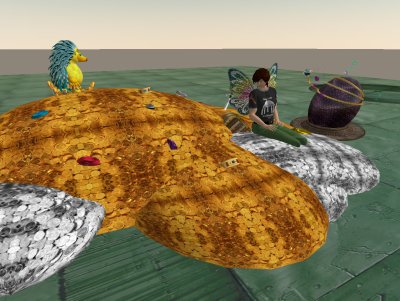We know that the nature of the web is changing from read only to read/write. Traditionally libraries have been concerned about access to reading material. Is it time to look toward access to read / write material too – not just by cataloguing or linking to it, but by creating a platform for our users ?
It’s disruptive
The novel – mainstay of many public library collections – only came into existence in English in 1740 with Richardson’s Pamela. A sustained fictional narrative was a new thing. I presume its success was partly due to rising literacy among those likely to consume it, but also a new mindset where fiction was accepted as content matter worth reading.
Over 150 years after the first novel – it was still a disruptive technology. American librarians were discussing what they called the “fiction problem” – which was that
people liked fiction, while many librarians regarded fiction-reading as little better than pool-playing.
Readers’ Advisory Service: New Directions. Ross, Catherine Sheldrick, RQ v30 n4 p503 – 18 Sum 19
The read/write web is similarly disruptive. Just like the librarians of the 1900s didn’t want to become custodians and enablers of something they considered trivial and contrary to their “real purpose”, social networking software is viewed by many contemporary librarians in a similar way.
Our skills can be easily adapted
Librarians actually have skills that would make us very good at providing social networking platforms for our users. We have skills at evaluating information resources. Many libraries have built complex matrices to assess potential online journal subscriptions – which include technical IT factors like platform independence, compatibility with existing systems – as well as user interface, ease of access, ease of use. We often liaise with technical services or IT to get our databases working well. We have a lot of expertise as the “middle layer” between databases and users – setting it up, integrating it into existing systems, writing and giving training.
Is using other social platforms “privatisating information by stealth” ?
A participant in the Victoria Public Libraries Learning 2.0 programme expressed in their final post (on the deliciously named blog “It’s the Queen of Darkness, Pal” ) concerns about libraries using private internet conglomerates to store their data. I guess this covers services like Picture Australia using Flickr or subject guides created using a del.icio.us tag cloud:
Personally, my take on web 2.0 is that libraries need to get much more actively involved “from the inside” rather than whooping from the sidelines (if I can go back to my Oprah analogy, in case you missed it).
I think that using all the technologies in the learning 2.0 program is a great idea, but really I think we need to move far beyond just using other companies gadgets and gizmos to and going “wow that’s pretty cool, what a nifty idea” to being the ones that are coming up with the ideas and actually inventing the gizmos.
.
I have said this before, but, for example, rather than encouraging everyone to use blogger, I think libraries, especially state and national libraries should be setting up their own blogging sites for their users. Where will Blogger be in 100 years? Who will be looking great grandmother Ethel’s blog from when she was a teenager? Rather than entrusting all our cultural data to corporate conglomerates, why not put it in the hands of our oldest, and most esteemed public institutions, our libraries?
.
Frankly, I think we need to start doing these things or we will become irrelevant and then disappear (yikes).
last post: privatising information by stealth
When would it make sense ?
Obviously libraries aren’t going to try out-wiki Wikipedia or out-blog blogger, but there are times when it makes sense for someone in an organisation to provide social networking platforms on behalf of the organisation – and I’d argue that our skills perfectly place us to be that someone. Lets take providing blogging software for an institution for example. Here’s some instances where it makes sense for an organisation to self-host.:
- If the DNS is important. If you want your users to be able to find you using the URL associated with your institution. Yes, you can associate a hosted site with your own URL, but often the network security department isn’t going to let you do that.
- If your clients are not charged for traffic inside a local network. At my uni, students are not charged for traffic on sites within the Western Australian university network – but are for those outside. Independent hosting would force students to pay to access those sites.
- If it belongs on an intranet.
- If the organisation has an ethical or statutory duty to ensure data is 100% secure and archivable.
- Staff are required to use a blog as part of their job – eg. instead of a departmental newsletter. They should be able to use their existing staff authentication to author the blog and not be forced off-site.
It’s already happening
UThink: blogs at the University of Minnesota is a project where the University Libraries are using Movable Type to host and maintain blogs for their university community. I have heard on the grapevine that there are another couple of university libraries in North America planning to do the same thing.
The statistics for UThink are impressive:
Blogs: 5366
Entries: 78202
Comments: 104272
Authors: 12653
I applaud the reasons the librarians give in their answer to the FAQ Why are university libraries hosting blogs ?
…the Libraries have numerous goals with this project: to promote intellectual freedom, to help build communities of interest on campus, to investigate the connections between blogging and the traditional academic enterprise, and to retain the cultural memory of the institution.


